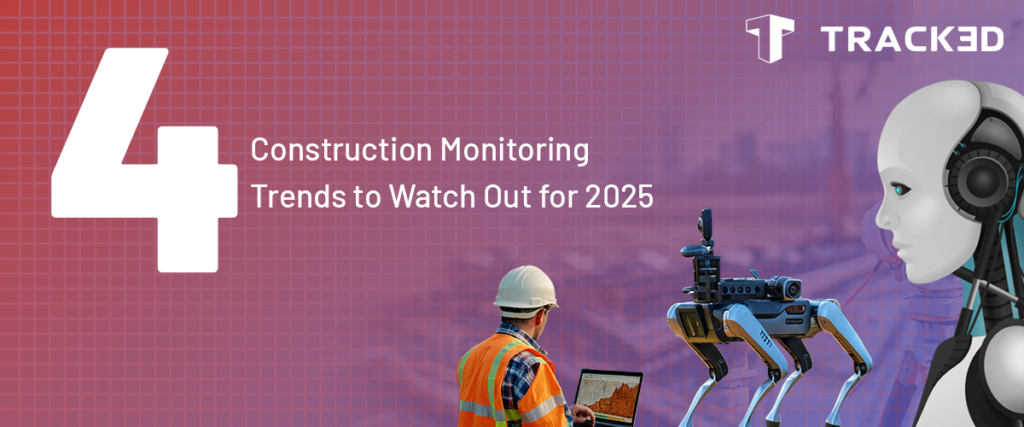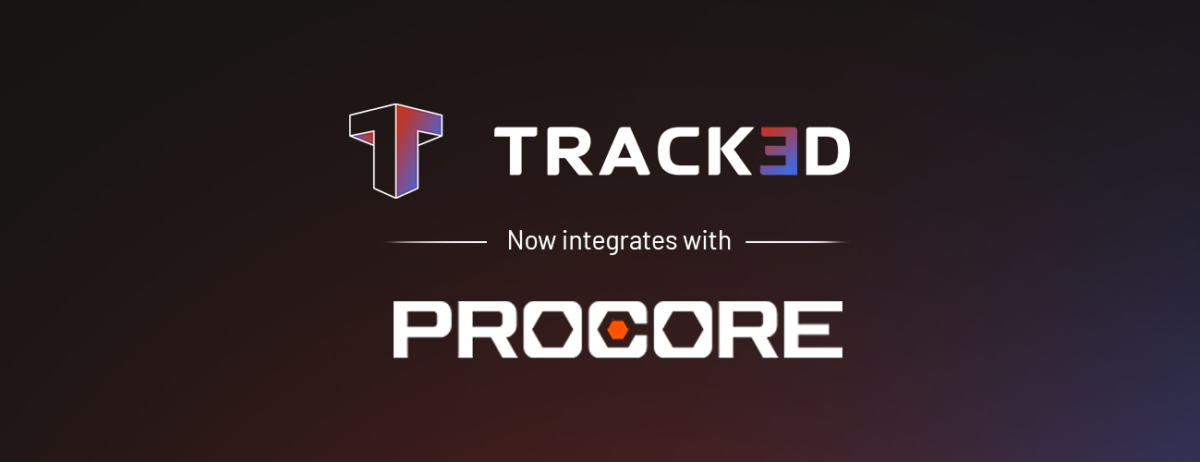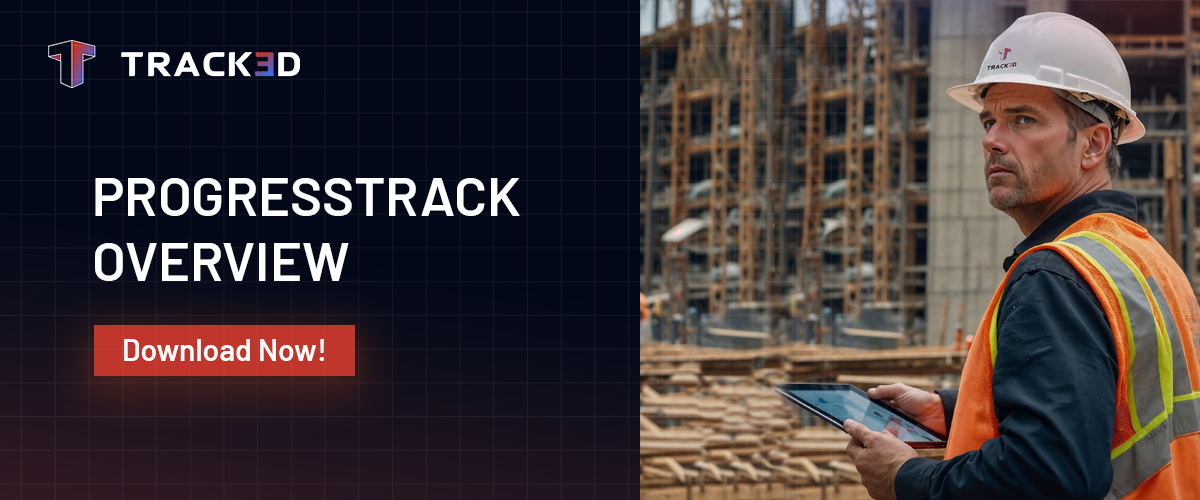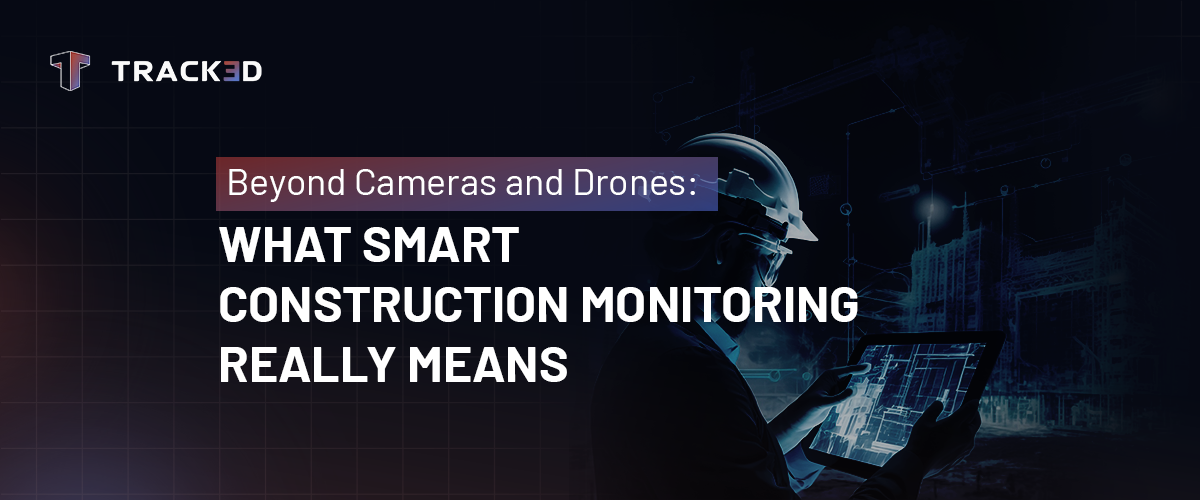Blogs
Top 4 Construction Monitoring Trends to Watch Out for 2025

The construction industry is no stranger to tough challenges.
Every project comes with its own unique set of challenges, such as labor shortages, tight schedules, safety problems, and cost overruns.
But in the past few years, there’s been a significant change in how we have been approaching these challenges. Technology is no longer just a supporting player; it’s now at the forefront of changing how construction projects are planned, executed, and delivered.
And construction monitoring alone has seen some remarkable advancements. By leveraging cutting-edge tools, project teams are able to gain actionable insights into every aspect of their sites. Whether it’s documenting the site comprehensively, tracking the progress of all the elements, or identifying the deviations early on, construction monitoring has evolved into a sophisticated process that prioritizes efficiency and precision.
As we look ahead to 2025, the pace of innovation shows no signs of slowing down. Emerging trends in construction monitoring aren’t just about adopting fancy software or gadgets.
They’re about solving real-world problems.
They’re about helping teams work smarter, not harder.
They’re about ensuring that projects are delivered on time, within budget, and with minimal environmental impact.
In this blog, we’ll look at four significant developments that are expected to revolutionize construction monitoring in 2025. These trends are based on industry observations that reflect evolving best practices and technological breakthroughs. They provide real-world solutions and a glimpse into how smarter monitoring can improve project outcomes.
1. Reality Intelligence
Project teams were frequently left with inaccurate or out-of-date information by the traditional monitoring techniques, which resulted in costly errors, delays, and misunderstandings.
However, Reality intelligence is here to tackle these challenges. It leverages advanced AI & ML algorithms to provide an entirely new approach to construction monitoring—one that’s driven by accurate and actionable insights.
What makes Reality Intelligence so special is its ability to combine various types of reality capture technology into a single, unified platform. Reality Intelligence effortlessly integrates all of these data streams, including LiDAR scanners for precise 3D models, 360-degree cameras for recording site progress, drones for aerial views, and mobile devices for quick on-site images. This comprehensive approach guarantees that project teams always have access to the most up-to-date and accurate information. It’s no longer about relying on one method or tool.
This change is being spearheaded by platforms like Track3D, which have made it simpler than ever to adopt a comprehensive approach to construction monitoring. Teams can now rapidly compare as-built conditions to design models, track progress with pinpoint accuracy, and take proactive measures to prevent expensive rework.
The impact is already evident in real-world applications.
Track3D users have reported notable benefits such as
- 12% increase in schedule adherence
- 15% increase in productivity and
- 20% reduction in rework expenses
These metrics show how Reality Intelligence improves day-to-day operations and delivers tangible savings that directly impact the bottom line.
This technology makes sure that every phase is successful, from pre-planning to final project handover. Reality Intelligence isn’t just about monitoring progress; it’s about transforming how projects are delivered smarter with fewer setbacks along the way.
2. Agentic AI
Agentic AI is becoming highly popular in the construction monitoring business because it is no longer only about collecting data; it is about acting on it. The potential of this next-generation technology to evaluate massive amounts of data, make decisions, and execute tasks autonomously takes AI to a whole new level. It actively addresses potential hazards or delays before they become problems, rather than merely warning about them.
For example, it can detect schedule bottlenecks caused by weather-related delays or material shortages and automatically adjust timetables or reallocate resources to ensure efficiency.
But it doesn’t end there. Agentic AI is also transforming safety management on job sites.
Through constant monitoring of site conditions, it may spot concerns like hazardous equipment use or environmental risks and quickly take corrective action. This proactive strategy prevents accidents and guarantees adherence to safety requirements, which is something every construction team aspires for but often finds it difficult to accomplish.
As we move into 2025, agentic AI is starting to emerge as more than simply a helpful tool; it’s turning into a crucial part of how modern construction projects are monitored and managed. This technology is paving the way for smarter, safer, and more effective construction monitoring by thinking ahead, solving issues on its own, and providing actionable insights instantly.
3. Robodogs
Robotic technologies have been making a real impact on the construction industry, with robo-dogs quickly taking the spotlight. These agile, four-legged robots are equipped with cameras, sensors and LiDAR systems which allow them to navigate complex environments while capturing precise, real-time data. With their ability to work in challenging conditions and cover huge areas, robo-dogs are becoming a vital tool for project teams.
Robodogs can handle routine and repetitive site scanning tasks without breaking a sweat. Unlike human inspectors who may struggle to access dangerous or difficult-to-reach regions, robodogs can easily navigate uneven terrain, climb stairs, and enter enclosed spaces. This capability mitigates operational hazard for personnel while delivering high-quality data for analysis.
In collaboration with Ryan Companies, Track3D utilized robodogs to capture site data on a large-scale construction project. The robodogs were deployed to scan the site, capturing 360-degree images, generating 3D point clouds, and collecting accurate progress data. This enabled the project team to smoothly feed the data into Track3D’s platform, where it was analyzed and visualized to deliver actionable insights.
What’s more intriguing is that robodogs are getting more affordable, making them accessible to a broader range of construction folks. Their scalability and cost-effectiveness open new opportunities for projects of any scale.
With technological developments and increased accessibility, robodogs are about to play an even larger role in transforming project monitoring.
4. Augmented Reality & Virtual Reality
Augmented Reality connects the digital and physical worlds by overlaying 3D models, or schematics onto a job site. This allows project teams to compare as-built conditions to design plans directly on-site, identifying discrepancies early on and ensuring that progress is in line with project objectives. Whether it’s guiding workers through complex installations or visualizing underground utilities before digging, AR mitigates errors and provides on-site operations with remarkable clarity.
VR enhances AR by delivering a fully immersive digital environment that helps project stakeholders to virtually visit a construction site without physically being there. This is particularly useful for remote collaboration, as team members, architects, and clients may walk through a project’s current or planned state, providing feedback and making real-time decisions. VR environments also include advanced simulations that allow teams to test scenarios such as scheduling changes, logistics challenges, and weather impacts before they occur, resulting in a more resilient project plan.
Both AR and VR offer innovative ways to enhance communication and coordination. With AR, superintendents and field engineers can conduct detailed site inspections using wearable devices or tablets, while VR allows project teams to present accurate progress updates to stakeholders, fostering transparency and trust. These technologies also play a critical role in training by creating safe, realistic environments for workers to practice tasks or familiarize themselves with the site layout.
As these technologies continue to evolve, their potential applications in construction monitoring will only expand. By blending physical and virtual realities, these tools not only streamline operations but also redefine how teams visualize, track, and deliver projects in 2025 and beyond.
Conclusion
The way we monitor construction projects is changing faster than ever, driven by innovations that are solving real-world challenges and redefining industry standards. With advancements like Reality Intelligence consolidating diverse data streams to provide AI-driven insights, robodogs capturing site data seamlessly and ensuring safe site inspections, Agentic AI solving problems before they arise, and immersive AR/VR technologies bridging the gap between physical and digital world, the possibilities are endless.
A job site where every detail is captured, where safety risks are flagged before they become incidents, and where decisions are made with complete confidence because the data is always accurate and actionable. That’s not a distant dream, it’s happening now. These trends enhance how we monitor projects along with how we think about efficiency, safety, and collaboration.
However, the true promise of these technologies lies in their ease of integration into day-to-day operations. These tools are not just for tech-savvy teams or large-scale construction projects; they are designed to be accessible, scalable, and impactful to all construction professionals.
As we kickstart 2025, it becomes evident that construction monitoring is no longer about reacting to issues as they arise, but rather about preventing them. It’s about building smarter, safer, and more sustainable projects by using tools that allow teams to collaborate effectively.
Ready to embrace smarter monitoring solutions?
To see how Track3D is transforming construction projects with innovations like Reality Intelligence and robodogs – Book a Demo with us.




